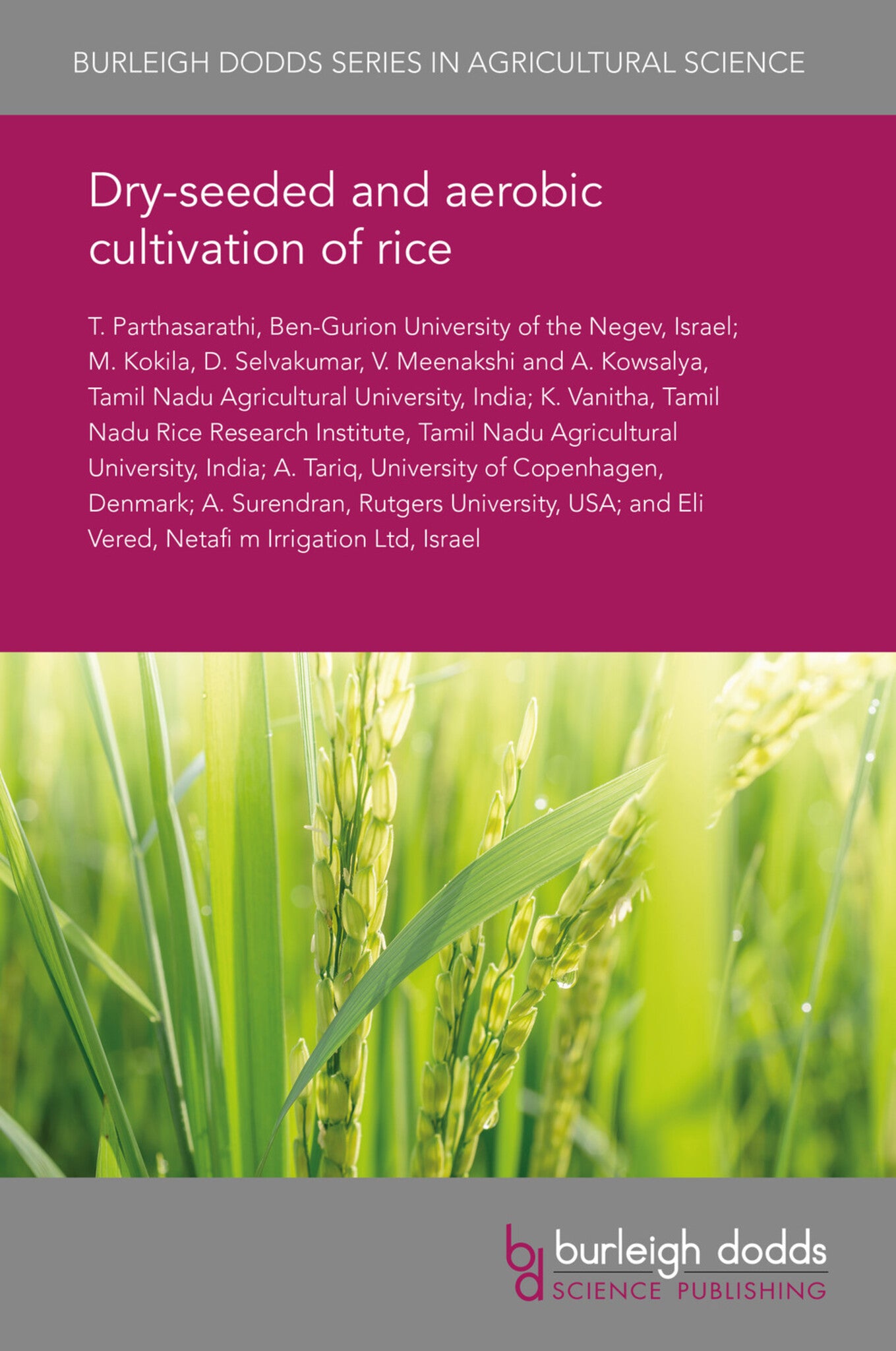We're sorry. An error has occurred
Please cancel or retry.
Dry-seeded and aerobic cultivation of rice
T pathasarathi,
M. kokila,
D. selvakumar,
V. meenakshi,
A. kowsalya,
View More
K. vanitha,
A. tariq,
A. surendran,
Eli vered
Regular price
£25.00
Sale price
£25.00
Regular price
£25.00
Unit price
/
per
Sale
Sold out
Re-stocking soon
Finding an efficient irrigation strategy that would minimize water consumption in rice cultivation is a key objective in dealing with the potential future competition for and scarcity of water as a...
Read More

Some error occured while loading the Quick View. Please close the Quick View and try reloading the page.
Couldn't load pickup availability
- Format:
-
31 May 2017

Finding an efficient irrigation strategy that would minimize water consumption in rice cultivation is a key objective in dealing with the potential future competition for and scarcity of water as a resource. Several water-saving techniques have been developed, including dry-seeded rice and aerobic rice cultivation. This chapter explores these techniques and good agricultural practices (GAP) for optimizing use of both these techniques, describing the entire process in detail from field preparation to harvesting and suggesting best practice in each case. The chapter evaluates the differences between dry direct seeded and aerobic rice cultivation.

Price: £25.00
Publisher: Burleigh Dodds Science Publishing
Imprint: Burleigh Dodds Science Publishing
Series: Burleigh Dodds Series in Agricultural Science
Publication Date:
31 May 2017
ISBN: 9781838792428
Format: eBook
BISACs:
TECHNOLOGY & ENGINEERING / Agriculture / Sustainable Agriculture, Agronomy and crop production, TECHNOLOGY & ENGINEERING / Agriculture / Agronomy / Crop Science, Sustainable agriculture

1 Introduction 2 Dry direct seeded rice cultivation 3 Good agricultural practices (GAP) in dry direct seeding 4 Aerobic rice cultivation 5 Good agricultural practices (GAP) in aerobic rice cultivation 6 Conclusion and future trends 7 Where to look for further information 8 References



